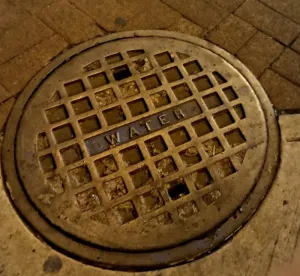Overview
In the past year, federal circuit courts have already issued five decisions addressing the question of whether permitting obligations and other liability under the Clean Water Act (CWA) apply to leaking pits, pipes, and other discharges reaching navigable waters through groundwater. In each case, environmental groups brought CWA citizen suits alleging that releases from these settling ponds, pipelines, and injection wells constitute pollutant discharges to navigable waters without a National Pollutant Discharge Elimination System (NPDES) permit.
Discussion
The “split” created by these decisions has set up the likely review by the United States Supreme Court of their differing CWA interpretations, assuming Congress declines to resolve the disputes through legislation. The litigation presents the Court with an opportunity to focus the CWA, and statutory programs in general, on the core elements and regulated activities identified in the legislation, as opposed to expanding the CWA’s applicability to cover releases into groundwater already regulated under other waste and water programs like the Resource Conservation and Recovery Act (RCRA), the Safe Drinking Water Act (SDWA), and the Comprehensive Environmental Response, Compensation and Liability Act (CERCLA). Many representatives of agencies, utilities, and industries support a more focused CWA interpretation that avoids duplicative regulation. But environmental groups are continuing to target such releases - particularly those impacting or threatening impaired water bodies, sensitive wildlife habitat or vulnerable communities - with any and all statutory claims they can credibly assert. Owners and operators of tanks, sewers, subsurface disposal systems, landfills, impoundments, and other facilities potentially releasing pollutants to groundwater may want to follow these cases and consider steps they can take to avoid or defend such actions.
The CWA requires an NPDES permit for the discharge of pollutants into navigable waters. 33 U.S.C. § 1311(a). The CWA defines a “discharge” as “any addition of any pollutant to navigable waters from any point source.” 33 U.S.C. § 1362(12). A “point source” is “any discernible, confined and discrete conveyance . . . from which pollutants are or may be discharged.” 33 U.S.C. § 1362(14).
In Hawaii Wildlife Fund, et al. v. County of Maui, 881 F.3d 754 (9th Cir. 2018), the parties did not dispute that the County’s four injection wells, used to inject treated wastewater into groundwater, were point sources, and none denied that the treated effluent reached the Pacific Ocean (a navigable water). The 9th Circuit noted that CWA liability is not precluded because “the groundwater plays a role in delivering the pollutants from the wells to the navigable water.” The 9th Circuit held the County liable under the CWA because the County discharges pollutants from a point source and the pollutants are “fairly traceable from the point source to a navigable water such that the discharge is the functional equivalent of a discharge into the navigable water.”
In Upstate Forever, et al. v. Kinder Morgan Energy Partners LP, 887 F.3d 637 (4th Cir. 2018), the court initially determined that Kinder Morgan’s gasoline pipeline unambiguously qualifies as a point source. The court concluded that a point source is the starting point or cause of a discharge under the CWA, but it does not need to convey the discharge directly to navigable waters. The decision agreed with the 9th Circuit’s holding in Hawaii Wildlife that a discharge that passes from a point source through groundwater to navigable waters may support a claim under the CWA. Both the 9th Circuit and the 4th Circuit found that a discharge through groundwater does not always support liability under the CWA. Instead, the 4th Circuit stated that the connection between a point source and navigable waters must be clear. The court held that a plaintiff must allege a “direct hydrological connection” between groundwater and navigable waters in order to state a claim under the CWA for a discharge of a pollutant that passes through groundwater. The court also noted that the traceability of a pollutant in measurable quantities is an important factor in the fact-specific determination of whether a particular discharge is covered by the CWA.
Both the 9th Circuit and the 4th Circuit concluded that the CWA is not limited to discharges of pollutants “directly” from a point source to navigable waters. Both courts also referred to Justice Scalia’s plurality opinion in Rapanos v. United States, 547 US 715 (2006), in which he stated that the CWA “does not forbid the ‘addition of any pollutant directly to navigable waters from any point source,’ but rather the ‘addition of any pollutant to navigable waters.’” Id. at 743 (quoting 33 USC § 1362(12)(A)). Rapanos is a significant Supreme Court decision in a long line of judicial holdings attempting to define or interpret critical CWA jurisdictional terms that Congress left either undefined or ambiguous.
The County of Maui in the 9th Circuit and Kinder Morgan in the 4th Circuit have each petitioned the Supreme Court for a writ of certiorari. The County of Maui’s petition in Hawaii Wildlife Fund argues that the 9th Circuit’s holding fails to recognize the CWA’s distinction between point source and nonpoint source pollution by erroneously expanding NPDES permitting to nonpoint source pollution, over which the states retain primary authority under the CWA. The County also observes that Congress has enacted several laws including RCRA, SDWA, and CERCLA expressly addressing groundwater pollution concerns. The petition contends that the Supreme Court should grant certiorari to restore nationwide uniformity to NPDES permitting and reject the 9th Circuit’s reading of the CWA subjecting states and private property owners to significant new liability without clear statutory direction. Environmental groups in Hawaii Wildlife have asked the Court to deny the County’s petition, contending that the 9th Circuit is simply applying established law to the facts presented, consistent with the Rapanos plurality opinion, rather than creating any new CWA jurisdictional test.
Kinder Morgan’s petition in Upstate Forever argues that the 4th Circuit’s “direct hydrological connection” test, as well as the 9th Circuit’s decision, conflict with decisions from the 5th and 7th Circuits and contradict the text, structure, and history of the CWA. The petition also emphasizes that the Supreme Court should resolve the circuit split over when, if ever, the CWA applies to a discharge into soil or groundwater. In response, the environmental groups argue that the 4th Circuit “[did] not expand the meaning of ‘navigable waters’ to include groundwater,” but instead “properly applied the statutory definition of ‘discharge of a pollutant’ to conclude that the Clean Water Act does not exempt this particular kind of discharge to surface waters.”
In the month following the filing of the petitions to the Supreme Court, three circuit courts did not find liability under the CWA in decisions concerning coal ash pond discharges. In Sierra Club v. Va. Elec. & Power Co. (4th Cir. 2018), Virginia Electric Power Company (VEPCO) had not challenged the lower court’s finding that there was a direct hydraulic connection to the navigable water through groundwater, and the court accepted without discussion that such a connection was sufficient to establish liability under the CWA based on its decision in Upstate Forever. However, the 4th Circuit concluded that the landfill and settling ponds do not constitute point sources as defined by the CWA, despite the fact that pollutants from the coal ash stored on the site were found to have reached navigable waters. The 4th Circuit found that Congress clearly intended to target the measurable discharge of pollutants from point sources under the CWA, a task that is “virtually impossible” when the alleged discharge is diffuse and not the product of a discrete conveyance. The 4th Circuit thus held that regardless of whether a source is a pond or some other type of container, the source must still be functioning as a conveyance of the pollutant into navigable waters to qualify as a point source. The 4th Circuit also held that groundwater pollution from solid waste falls squarely within the regulatory scope of RCRA.
In Kentucky Waterways Alliance et al. v. Kentucky Utilities Co. (6th Cir. 2018), environmental conservation groups sued Kentucky Utilities Co. (KUC), alleging that the chemicals in KUC’s coal ash ponds are contaminating the surrounding groundwater, which in turn contaminates a nearby lake in violation of the CWA and RCRA. The 6th Circuit found that the CWA does not extend liability to pollution that reaches surface waters via groundwater, explicitly stating that they disagree with the decisions of their sister circuits. The 6th Circuit concluded that groundwater underlying the coal ash ponds is not a point source because it is not discernible, confined, or discrete. The 6th Circuit further held that for a point source to discharge into navigable waters, it must dump directly into those navigable waters. Referring to CWA “effluent limitations” as the “guidelines by which a CWAregulated party must abide,” the court noted that such limitations are defined “as restrictions on the amount of pollutants that may be ‘discharged from point sources into navigable waters,’” and found that “the phrase ‘into’ leaves no room for intermediary mediums to carry the pollutants.” The court found that coal ash is solid waste, which RCRA is specifically designed to cover. Pursuant to RCRA, the EPA issued a formal rule, the Coal Combustion Residuals rule (CCR Rule), which is specifically designed to regulate coal ash storage and treatment in landfills and surface impoundments. Recognizing that RCRA explicitly exempts from its coverage discharges subject to CWA regulation, the court determined that finding liability for KUC’s actions under the CWA would be problematic because RCRA exemptions would then remove the coal ash pond with a hydrological connection to a navigable water from RCRA coverage. Thus the court declined to interpret the CWA in a way that would “effectively nullify” the CCR Rule and other portions of RCRA.
In Tennessee Clean Water Network et al. v. Tennessee Valley Authority (6th Cir. 2018), the 6th Circuit concluded that the plaintiff’s hydrological connection theory is not a valid theory of liability. The court determined that groundwater is not a point source and found that when pollutants are discharged to a navigable water they are not coming from a point source—they are coming from groundwater, which is a nonpoint-source conveyance. The court referred to its Kentucky Waterways holding and found that the CWA requires two things in order for pollution to qualify as a discharge of a pollutant: “(1) the pollutant must make its way to a navigable water (2) by virtue of a point-source conveyance.” The court also referred to its holding in Kentucky Waterways regarding the statutory context, finding that the CCR Rule adopted under RCRA, not the CWA, is the framework that addresses the problem of groundwater contamination caused by coal ash impoundments.
The current circuit split creates uncertainty about whether pollutants conveyed through groundwater to navigable waters are governed by the CWA. Parties in County of Maui (9th Cir.) and Kinder Morgan (4th Cir.) have filed petitions for writs of certiorari, asking the Supreme Court to resolve the circuit split. The 6th Circuit explicitly stated that it disagreed with the decisions of its sister circuits, which further solidifies this division. The issue is certainly “ripe” for review by the U.S. Supreme Court, assuming Congressional efforts to develop a legislative fix continue to fail. Given the history of litigation over ambiguous CWA terms, the question remains whether review by the Supreme Court is likely to put an end to the issue.




 />i
/>i
